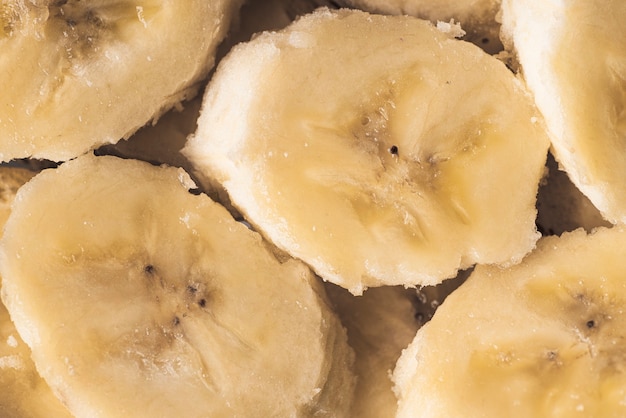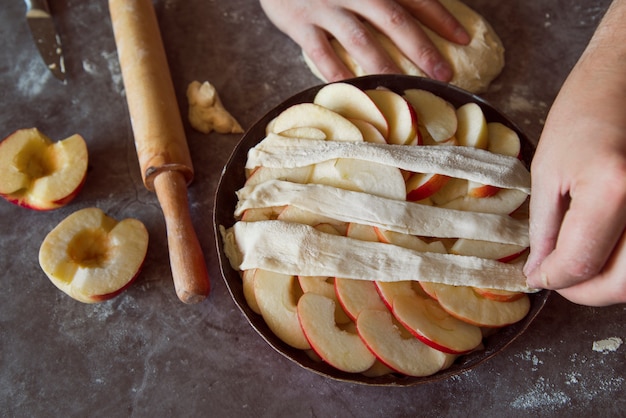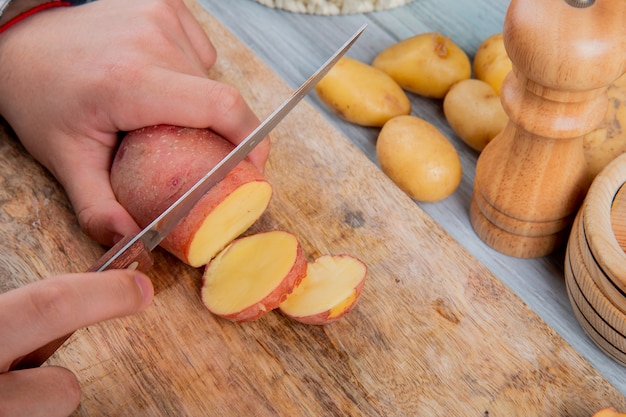Have you ever wandered through the produce aisle, spotted a strange, round brown root, and thought, "What on earth is that?" That, my friend, is jicama, pronounced "hee-ka-ma." And trust me, it's far more exciting than it looks. This overlooked gem is like the cool, crunchy cousin of the potato, boasting a subtly sweet flavour and a satisfyingly crisp texture that makes it a delightful snack and a versatile ingredient.
I'll admit, when I first encountered jicama, I was a bit baffled. What could I possibly do with this weird, white-fleshed root? The internet offered up recipes that seemed more complicated than necessary, with exotic ingredients and unfamiliar techniques. I just wanted something simple, something I could throw together on a busy weeknight. So I started experimenting, and let me tell you, I've uncovered some truly brilliant ways to enjoy this fantastic vegetable.
Whether you're looking for a healthy snack, a refreshing salad ingredient, or a unique addition to your favourite dishes, jicama has got you covered. It's surprisingly easy to prepare, too, and I'm going to walk you through it step-by-step in this article. So, grab your knife (and maybe a bottle of lime juice!), and let's dive in.
(Part 1) Getting to Know Jicama

What is Jicama?
Jicama, sometimes called yam bean or Mexican turnip, is a root vegetable native to Mexico. It's a member of the legume family, related to beans and peanuts. Think of it as a cross between a potato and a water chestnut, with a firm, crisp texture and a subtle sweetness that can sometimes remind people of a raw apple. And the best part? It's incredibly low in calories and packed with nutrients.
What Does Jicama Look Like?
Imagine a large, round root vegetable, about the size of a grapefruit. The outer skin is brown and rough, while the inside boasts a clean, white, starchy flesh. It's this flesh that we'll be using in our recipes.
Nutritional Benefits of Jicama
Jicama is a nutritional powerhouse, offering a host of health benefits in a low-calorie package. Here's a quick rundown of its nutritional profile:
- Vitamin C: Jicama is a good source of vitamin C, an antioxidant that supports immune function and collagen production.
- Potassium: This essential mineral helps regulate blood pressure and supports muscle function.
- Fibre: Jicama is high in fibre, which aids digestion and promotes a feeling of fullness.
- Iron: Iron is vital for carrying oxygen throughout the body and is particularly important during pregnancy.
- Calcium: Calcium is crucial for strong bones and teeth, as well as healthy muscles and nerves.
And that's not all! Jicama also boasts a good amount of antioxidants, which help protect your cells from damage. So, not only is it delicious, but it's also good for you!
(Part 2) How to Choose and Store Jicama

Choosing the Right Jicama
When selecting jicama at the grocery store, look for a firm, heavy root for its size. You want a jicama that feels solid and weighty in your hand. Avoid any that have soft spots, bruises, or cracks on the skin. A smooth, unblemished skin is a good sign of freshness.
Storing Jicama
Jicama can be stored at room temperature for a few days, but it will last longer if you keep it refrigerated. Simply wrap the jicama tightly in plastic wrap and store it in the crisper drawer of your refrigerator for up to two weeks.
(Part 3) How to Prepare Jicama

Getting Started
First things first, you'll need to peel the skin off the jicama. A sharp knife will do the trick, but I personally prefer using a vegetable peeler for a smoother finish. Once you've peeled the skin, you'll be left with the white, starchy flesh underneath.
Cutting and Slicing
Jicama is surprisingly easy to cut. You can dice it, slice it, shred it – whatever suits your recipe. If you're planning on eating jicama raw, I recommend using a mandoline to create thin, even slices. This is perfect for salads or snacking, as it allows the jicama's crisp texture to shine. But for cooking, you can chop it into cubes or strips. Just remember, the smaller the pieces, the faster they will cook.
Pro Tips for Preparing Jicama
- Don't be afraid to experiment with different shapes and sizes. The way you cut jicama can impact its texture and how it interacts with other ingredients in your dish.
- If you're cutting jicama for salads, try to keep the pieces relatively small so they can absorb the dressing easily.
- For stir-fries, I prefer to use larger pieces that hold their shape better during cooking. This way, they retain their satisfying crunch.
(Part 4) Jicama Recipes: Easy and Delicious
Okay, now for the fun part – the recipes! I've broken them down into categories to make it easier to find something that appeals to your taste buds. Whether you're craving a simple snack, a light salad, or something more substantial, I've got you covered.
Simple Snacks and Salads
1. Jicama and Lime Salad
This is a refreshing and healthy snack or side dish that's perfect for summer days. It's so simple, you can whip it up in minutes. Just slice the jicama thinly, toss it with a squeeze of lime juice, a pinch of salt, and a sprinkle of pepper. Add some chopped cilantro or mint for extra flavour, if you like. This salad is light, crisp, and zesty, with a subtle sweetness that's both refreshing and satisfying.
2. Crunchy Jicama Sticks
Sometimes, you just want a quick and easy snack, and jicama is perfect for that. Cut the jicama into sticks, dip them in a bit of hummus or guacamole, and you've got yourself a delicious and healthy treat. I like to add a sprinkle of chilli flakes for a bit of heat, but that's totally optional.
3. Jicama and Mango Salsa
This vibrant salsa is perfect for topping tacos, fish, or chicken. It's a bright and flavourful combination of fresh jicama, mango, red onion, and cilantro. Simply chop the ingredients finely, toss them with some lime juice, and enjoy. For a bit of a kick, add a small piece of jalapeno, but it's not necessary. This salsa is a delicious way to add a burst of freshness and flavour to any dish.
Main Course Ideas
4. Jicama Stir-Fry
Jicama adds a delightful crunch and refreshing element to stir-fries. I love to stir-fry it with shrimp, tofu, or chicken, along with ginger, garlic, soy sauce, and my favourite vegetables. You can also add a bit of chilli sauce for extra flavour. The jicama cooks quickly, so add it towards the end of the stir-fry process to maintain its crispness.
5. Jicama and black bean tacos
These tacos are packed with flavour and texture, thanks to the satisfying crunch of the jicama. The jicama complements the black beans beautifully, while avocado adds creaminess. Top them with your favourite salsa, sour cream, or cheese. These are a hearty, healthy, and flavourful meal that's sure to please.
Sweet Treats
6. Jicama fruit salad
If you're looking for a healthy and refreshing dessert, this is it. Combine diced jicama with your favourite fruits, like strawberries, blueberries, pineapple, or mango. A little bit of honey or agave syrup adds sweetness, but it's not necessary. This salad is perfect for a light and satisfying end to a meal.
7. Jicama and Lime Popsicles
These popsicles are a refreshing and healthy treat on a hot day. Just blend jicama, lime juice, and some water, then pour the mixture into popsicle molds and freeze for a few hours. You can also add some fresh fruit or herbs for extra flavour. These popsicles are a fun and delicious way to cool down on a warm afternoon.
(Part 5) Beyond the Basics
So far, we've covered the simple and straightforward ways to use jicama. But this versatile vegetable is ready for more! There's a whole world of exciting recipes out there, and I'm about to take you on a little culinary adventure.
Jicama in Soups and Stews
Jicama can add a unique twist to your favourite soups and stews. Try adding it to a vegetable stew for extra crunch, or throw some diced jicama into a hearty lentil soup for a touch of sweetness. I like to add it to a creamy butternut squash soup for a bit of texture and contrast. The jicama will add a refreshing lightness to the dish, while its subtle sweetness complements the other flavours.
Jicama in Asian Cuisine
Jicama is a popular ingredient in Asian cuisine, particularly in Vietnamese and Thai dishes. You'll find it in salads, stir-fries, and even curries. In Vietnamese cuisine, jicama is often used in the popular salad "Goi Cuon," which is a refreshing mix of vegetables and herbs wrapped in rice paper. In Thai cuisine, it's frequently used in salads, where its crisp texture provides a nice contrast to the other ingredients.
Jicama as a Substitute
Jicama can be a great substitute for other ingredients in your recipes. For example, you can use it in place of potatoes in some dishes, such as mashed potatoes or potato salad. Just be sure to cook it for a shorter amount of time, as it's much quicker to cook than potatoes. The jicama will add a slightly different flavour and texture to these dishes, but it's a fun way to experiment with different ingredients.
(Part 6) Getting Creative with Jicama
Now, let's talk about some of my favourite jicama creations. These are the ones that have taken my tastebuds on a journey, the ones I can't stop thinking about.
Jicama and Avocado Toast
A simple, but oh-so-delicious twist on the classic avocado toast. I simply toast some sourdough bread, spread on a generous layer of mashed avocado, and top it with thinly sliced jicama. A squeeze of lime juice, a sprinkle of salt and pepper, and maybe a few chilli flakes for a kick? You're welcome. This is a satisfying and healthy meal that's packed with flavour and texture.
Jicama Fritters
I'm not ashamed to admit I love a good fritter. And these jicama fritters are a revelation. Grate the jicama, mix it with some spices, and then fry them up until they're golden brown and crispy. Serve with a dollop of sour cream or a spicy dipping sauce. These fritters are a delightful combination of crispy and crunchy, with a touch of sweetness that makes them irresistible.
Jicama Noodles
If you're looking for a healthier alternative to pasta, you've gotta try jicama noodles. You can make them yourself by using a spiralizer or you can buy them pre-made. I love to toss them with pesto, cherry tomatoes, and a sprinkle of parmesan cheese. These noodles are a delicious and satisfying way to enjoy a lighter meal.
(Part 7) FAQs about Jicama
1. Is jicama really good for you?
Absolutely! Jicama is a low-calorie, nutrient-rich food that's packed with vitamins, minerals, and fibre. It's a great source of vitamin C, potassium, and iron, making it a valuable addition to your diet.
2. Does jicama taste like anything?
Jicama has a subtly sweet and nutty flavour with a crisp, refreshing texture. It's often compared to a water chestnut or a raw apple. The flavour is delicate, but it's a lovely complement to both sweet and savoury dishes.
3. How do you know if jicama is bad?
If the jicama is soft, mushy, or has brown spots, it's probably gone bad. The skin should be smooth and free of cracks or blemishes. If the jicama feels firm and heavy, it's likely still good to eat.
4. Is jicama a good source of protein?
No, jicama is not a significant source of protein. It's primarily a source of carbohydrates and fibre, which are important for energy and digestion.
5. Can you eat jicama raw?
Yes, jicama is delicious eaten raw. It's often enjoyed as a snack or added to salads and salsas. The crisp texture and subtle sweetness make it a refreshing and satisfying addition to any dish.
(Part 8) The Final Verdict
So, there you have it, my love affair with jicama! It's a delicious, versatile, and surprisingly easy-to-use vegetable that's definitely worth trying. Don't be afraid to experiment and get creative with your recipes. Who knows, you might just discover your next favourite ingredient.
Everyone is watching

Corn on the Cob: The Ultimate Guide to Perfectly Cooked Ears
Healthy MealsAh, corn on the cob. Just the name evokes images of sunny days, barbecues, and that sweet, juicy flavour that ...

Perfect Pork Roast Oven Cooking Time: A Guide to Delicious Results
Healthy MealsThere's something truly satisfying about a perfectly roasted pork. The aroma alone is enough to make your mout...

Ham Cooking Time: How Long to Bake, Smoke, or Boil a Delicious Ham
Healthy MealsAh, ham. It's a classic, isn't it? A real crowd-pleaser, especially around holidays. And when done right, it'...

Scallops: The Ultimate Guide to Perfect Cooking
Healthy MealsAh, scallops. Those delicate, sweet, and utterly delicious morsels of the sea. They hold a special place in my...

Spaghetti Squash: The Ultimate Guide to Cooking and Serving
Healthy MealsRemember that time you saw spaghetti squash at the supermarket, looking all bumpy and strange, and thought, "W...
